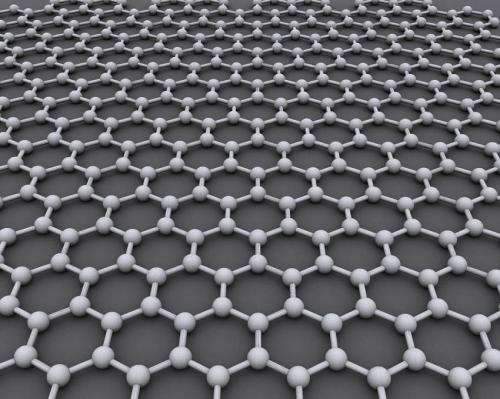Physicists create artificial 'graphene'

An international group of physicists led by the University of Arkansas has created an artificial material with a structure comparable to graphene.
"We've basically created the first artificial graphene-like structure with transition metal atoms in place of carbon atoms," said Jak Chakhalian, professor of physics and director of the Artificial Quantum Materials Laboratory at the U of A.
In 2014, Chakhalian was selected as a quantum materials investigator for the Gordon and Betty Moore Foundation. His selection came with a $1.8 million grant, a portion of which funded the study,
Graphene, discovered in 2001, is a one-atom-thick sheet of graphite. Graphene transistors are predicted to be substantially faster and more heat tolerant than today's silicon transistors and may result in more efficient computers and the next-generation of flexible electronics. Its discoverers were awarded the Nobel Prize in physics in 2010.
The U of A-led group published its findings this week in Physical Review Letters, the journal of the American Physical Society, in a paper titled "Mott Electrons in an Artificial Graphene-like Crystal of Rare Earth Nickelate."
"This discovery gives us the ability to create graphene-like structures for many other elements," said Srimanta Middey, a postdoctoral research associate at the U of A who led the study.
More information: S. Middey et al. Mott Electrons in an Artificial Graphenelike Crystal of Rare-Earth Nickelate, Physical Review Letters (2016). DOI: 10.1103/PhysRevLett.116.056801
Journal information: Physical Review Letters
Provided by University of Arkansas





















